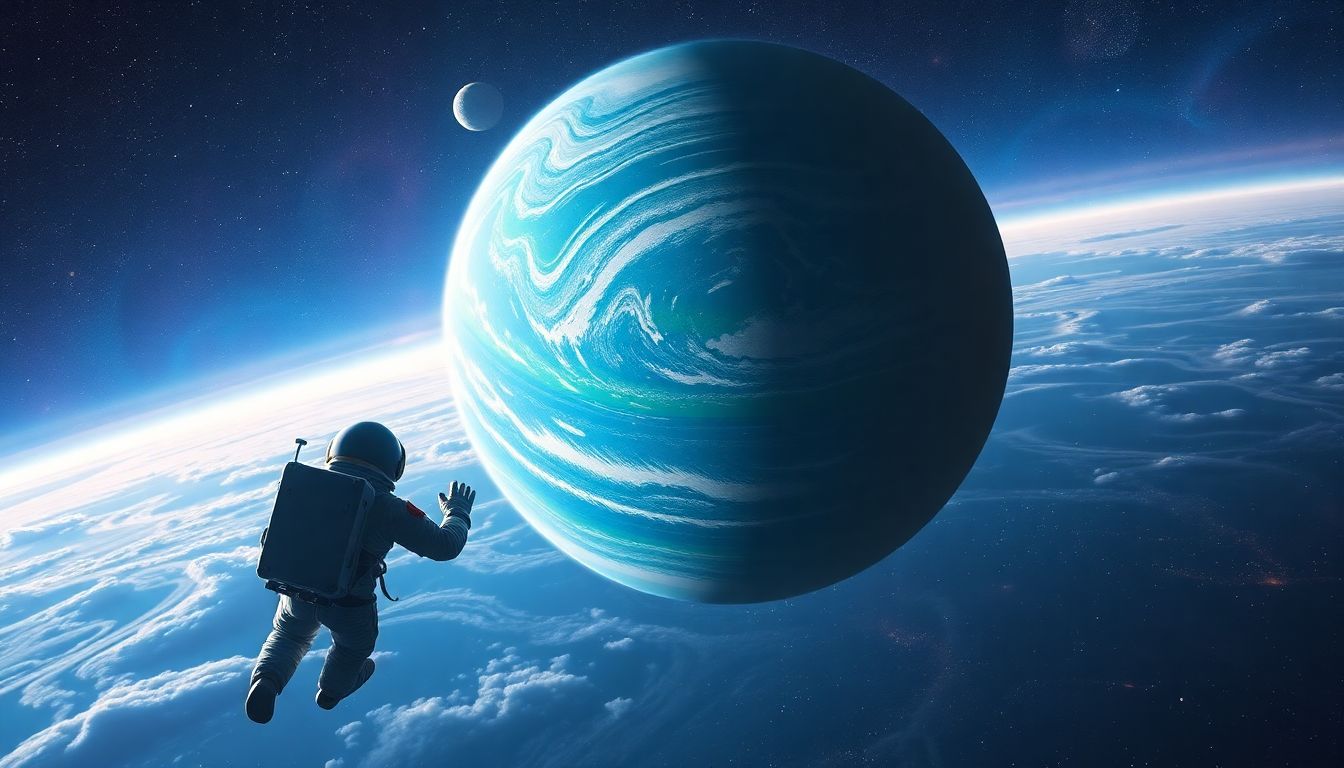
What Does It Feel Like to See a Planet Up Close: An Immersive Journey into Space Exploration
Introduction
Imagine staring at a planet within arm’s reach for the first time. The experience is nothing like seeing it from Earth. It’s awe-inspiring, humbling, and sparks a deep sense of curiosity. For centuries, humans have dreamed of getting closer to these celestial bodies. With space missions advancing fast, that dream is becoming reality. Seeing a planet up close unlocks secrets no telescope ever could. It’s a moment that can change your perspective forever. This article explores what it truly feels like to witness a planet in its full glory. From stunning visuals to emotional impacts, you’ll discover it all.
The Experience of Viewing a Planet Up Close: An Overview
Getting a close-up glimpse of a planet isn’t like peering through a telescope. It means a spacecraft or probe is nearby, sending back detailed images and data. These missions bring us face-to-face with celestial wonders. Think about the Voyager spacecraft reaching the outer planets or Mars rovers touching down on the red surface. These missions reveal surface features, atmosphere patterns, and even underground activity. They give us a new way to understand planets beyond distant views. Thanks to technology like cameras, spectrometers, and sensors, scientists slowly decode what makes each planet special.
Visual and Sensory Impressions When Seeing a Planet Up Close
The Stunning Visuals of Planet Surfaces and Atmospheres
Seeing a planet close-up is like a visual masterpiece. Imagine layered clouds swirling on Jupiter, or the jagged edges of Mars’s canyon. The surface details are sharp, revealing craters, volcanic flows, or icy poles. For example, NASA’s Mars rovers have shown us vast deserts filled with rocks and dust. Saturn’s magnificent rings appear layered and glowing. When scientists analyze these images, they find clues about a planet’s past and future. These visuals are more than pretty pictures—they unlock mysteries that shape our understanding.
The Sensory Experience: Touch, Sound, and Other Perceptions
While space is silent, close-up missions bring a spectrum of sensations. Instruments relay vibrations, temperature changes, and atmospheric conditions. Imagine feeling the tremors of volcanic activity on Io or the cool breeze near Mars’s ice caps. You might hear radio signals bouncing from the planet, or the hum of machinery analyzing the environment. Though we can’t physically touch planets from afar, virtual reality offers immersive experiences. You can don VR gear and explore surface terrains as if you were right there. It’s an engaging way to connect with these distant worlds.
The Scientific Perspective: What We Learn from Close Encounters
Gathering Data and Analyzing Planetary Composition
Close encounters provide critical insights about a planet’s makeup. Instruments measure the spectrum of gases in the atmosphere, revealing weather patterns and chemical makeup. Mineral analyses uncover what rocks and dust are made of. For example, the Mars Science Laboratory uncovered signs of ancient water flows. These findings tell us if a planet might have supported life in the past or even now.
Understanding Planetary Dynamics and Surface Features
Observation of surface features helps scientists see how planets change. For instance, volcanic eruptions on Io show active geologic processes. Polar ice caps on Mars hint at climate cycles. Close-up views help refine models of how planets form and evolve. This knowledge guides future missions and helps predict what might be found on other worlds.
The Impact of Close-Range Observations on Future Missions
Data from close-up views shape planning for future exploration. Insights about terrain safety or resource availability inform decisions for crewed missions. Observations of Mars’s surface, for example, help design habitats and rovers. Every new detail makes space missions smarter, safer, and more effective.
Emotional and Psychological Impact of Seeing a Planet Up Close
The Awe and Wonder Experienced by Astronauts and Researchers
For astronauts, seeing a planet close-up is life-changing. Many describe feelings of awe, even wonder. Visuals from Apollo missions or Mars rovers stick with scientists forever. Some feel an instant connection to the universe, a shift in perspective on humanity’s place in space. It’s like discovering a new universe within our reach.
The Drive and Inspiration Behind Space Exploration
Those close-up views ignite a passion to learn more. They push scientists and engineers to innovate. They remind us that exploration isn’t just about discovery; it’s about inspiration. Space agencies often highlight these moments because they unite us around a common goal: understanding the cosmos.
Tips for Integrating Personal Reflection and Inspiration
Next time you see close-up images of planets, take time to reflect. Keep a journal or explore virtual tours online. Join educational programs that bring space closer to you. These steps help you connect emotionally and stay motivated. Remember, awe is a powerful tool to spark interest in STEM careers or simply expand your horizons.
Challenges and Limitations of Close-Up Planet Observation
Technical and Logistical Challenges
Reaching close distances isn’t easy. Spacecraft need to withstand harsh conditions, such as radiation or extreme temperatures. Sending data across millions of miles also takes time and energy. Missions cost billions and require significant planning and resources.
Safety and Ethical Considerations
Scientists must avoid contaminating planets with Earth microbes. Protecting planetary environments is crucial for future research and preserving the natural state of these worlds. Balancing safety and curiosity is a major challenge for space agencies worldwide.
Conclusion
Seeing a planet up close is a transformative experience. It combines breathtaking visuals, scientific discovery, and emotional awe. These missions deepen our understanding of space and inspire generations to reach further. Every new close-up unlocks secrets about these distant worlds, making us appreciate our universe more. The journey continues, and each step brings us closer to unraveling cosmos’s greatest mysteries. Space exploration isn’t just about planets—it’s about expanding our horizons.
Embrace the wonder of space. Keep looking up, and let your curiosity lead you beyond the stars.

